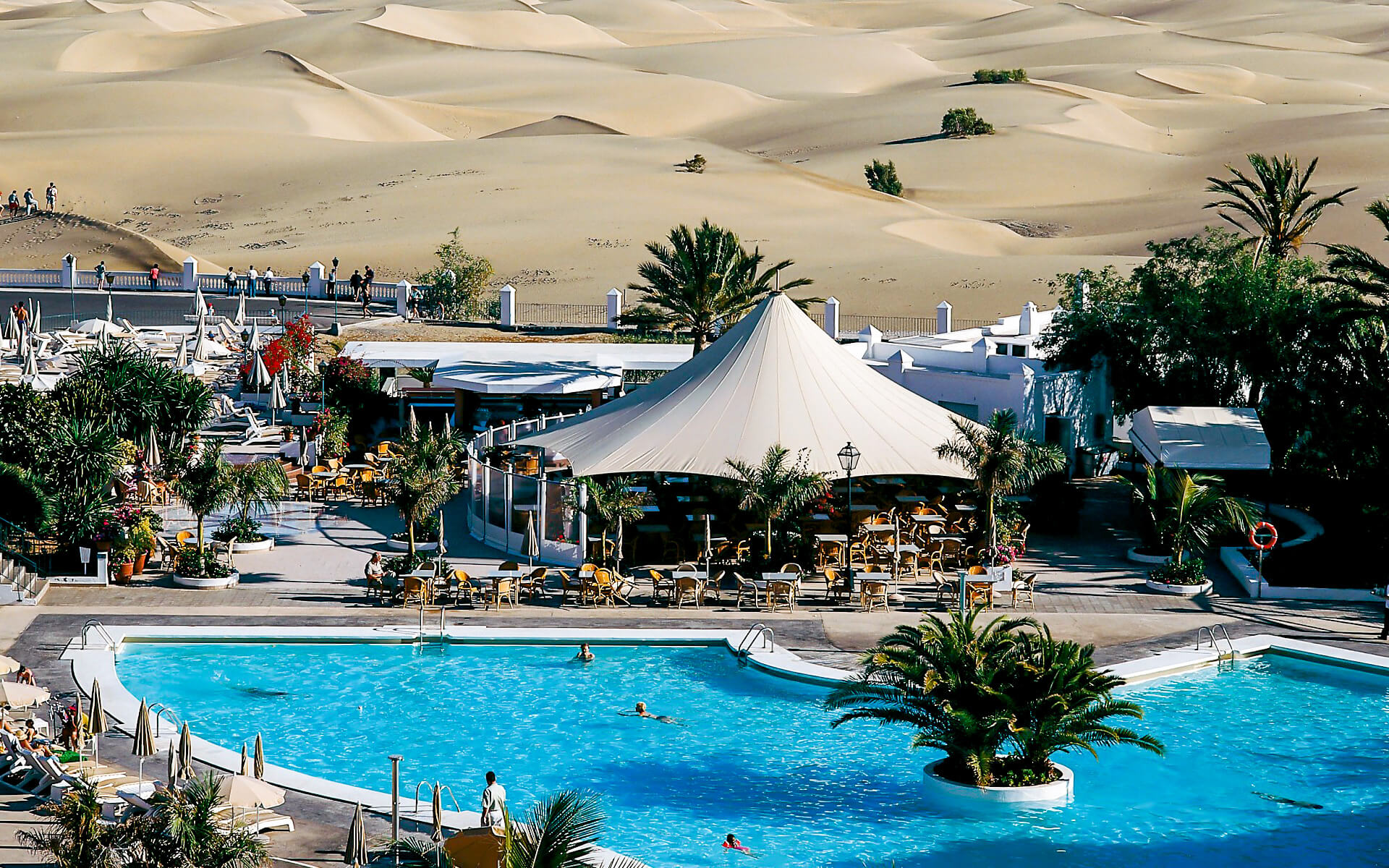This island is known as a “Miniature Continent” because of the many climates and sceneries encountered, including extensive beaches and dunes of white sand that contrast with lush ravines and charming settlements. UNESCO has designated a part of the island as a Biosphere Reserve.
In 2014, there were 3.6 million yearly tourists (of which 450.000 Spaniards). The southern half of the island attracts the majority of visitors. The north is generally colder, whilst the south is warmer and sunnier. The island’s east coast is flat and littered with beaches, but the west side is rockier and rugged.
The island has 32 Natural Protected Areas, including the Nublo Rural Park, the Doramas Jungle, the Azuaje Ravine, Tamadaba, Pino Santo, and others.
Palmitos Park, a huge bird park, and various beach resort settlements may be found in the south. Resorts are centered in the Maspalomas region of the southern coast, which includes the towns of San Agustn, Playa del Inglés, and Meloneras. The Maspalomas Dunes are situated between Playa del Inglés (“The Englishman’s Beach”) and the characteristic Maspalomas lighthouse from the nineteenth century.
There is an Aeroclub at Tarajalillo from which tourists may fly across the island.
Further west along the southern coast, in the Municipality of Mogán, are the towns of Puerto Rico and Puerto de Mogán, a community known as “Little Venice” because to its many canals.
Other attractions include Cocodrilos Park, Roque Nublo (an 80-meter monolith), Cenobio de Valerón with over 350 storage cavities, the Painted Cave of Galdar, the Canary Islands’ most important archaeological park, and the botanical gardens Jardn Canario (in Tafira Alta) and Cactualdea (in La Aldea de San Nicolás).
El Dedo de Dios, or “God’s Finger,” was a rocky spire rising from the sea near Puerto de las Nieves that was originally the Canary Islands’ defining attraction until it was destroyed by tropical storm Delta, which passed across the archipelago in November 2005.
El Cura (also known as El Fraile), The Frog (La Rana), Roque Bentayga, Roque de Gando, and Peón Bermejo are other well-known rock formations. The Pico de las Nieves, at 1,950 meters, is the highest point on the island (6,400 ft).
Las Palmas de Gran Canaria is the capital city. Las Canteras beach, a protected area and diving zone, is located near the city center. The yearly carnaval at Las Palmas de Gran Canaria is also well-known. It was the first stop of Christopher Columbus’ mission on his way back from the Americas, and the Hermitage of San Antonio Abad, where the navigator worshipped, and the Casa de Colón are memorials to him. Other attractions in the capital city include the Museo Canario (the archipelago’s most significant archeological museum), the church, and the Plaza del Espritu Santo. The shrine of the Virgen del Pino (“Virgin of the Pine”), Gran Canaria’s patron saint, can be located near Teror. Its feast is held on September 8th.
Agüimes, in the island’s east, has been meticulously restored, and its town center, based on a historic church and a tranquil plaza, now conjures the serene life of a typical Canarian village. In the protected region of the Guayadeque ravine, where even the church has been carved into the slope and tourists can discover a number of famous cave eateries, the neighborhood also boasts some of the finest preserved cave houses. The region also features the island’s most well-known scuba diving location, the marine reserve at Playa de El Cabrón, just outside the town of Arinaga.
Other notable settlements include Telde, which is widely known for its hot dog sales on the Salinetas shore, Vecindario (in the municipality of Santa Luca de Tirajana), and Gáldar, which is an important diving zone. Arucas is home to a Neogothic temple known as the “Arucas Cathedral,” as well as a huge fertile plain where bananas are produced. There is also a banana-growing plain in Gáldar and its surroundings, as well as some remarkable archaeological remains, such as the Painted Cave of Galdar or the cenobio de Valerón’s communal silos, ancient tombs (including the necropolis of Maipés), and the port of Sardina del Norte (one of the island’s ports where Christopher Columbus used to get supplies for his ships, as in Las Palmas).
The fishing town of Arguinegun in the Municipality of Mogán is located west along the southern coast.


